Introduction
How about we take a delightful detour from the usual and explore something excitingly unique? Say hello to the Lemon Cypress Bonsai, a little piece of Mother Nature that’s sure to charm you.
The Lemon Cypress Bonsai is like that one friend who lights up the room – or in this case, your living space. Known scientifically as Cupressus macrocarpa ‘Goldcrest,’ this bonsai variety is a true stand-out with attributes that make it a beloved choice for many.
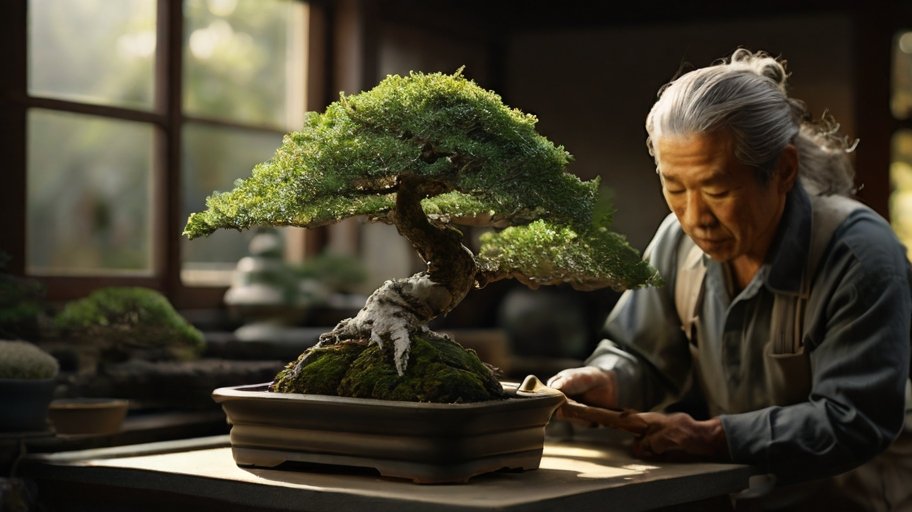
Here’s what sets the Lemon Cypress Bonsai apart:
- Vibrant Visuals: With its lush, lime-green foliage, this bonsai adds a pop of color that can brighten any corner.
- Soothing Scent: Brush against its leaves, and you unlock a refreshing lemon fragrance that’s nothing short of a sensory delight.
- Versatile Vibe: Whether it’s basking in the sun or chilling in the shade, the Lemon Cypress Bonsai is a hardy little trooper that adapts well to different conditions.
In the following sections, we’ll get to know this charming tree more intimately. From understanding its care requirements to learning how to shape it – we’ve got it all covered. So, if you’re ready to embark on a new plant journey, keep reading because the Lemon Cypress Bonsai might just be your next green companion!
Understanding the Lemon Cypress Bonsai
Hey there, ready to get up close and personal with the Lemon Cypress Bonsai? Let’s dive in!
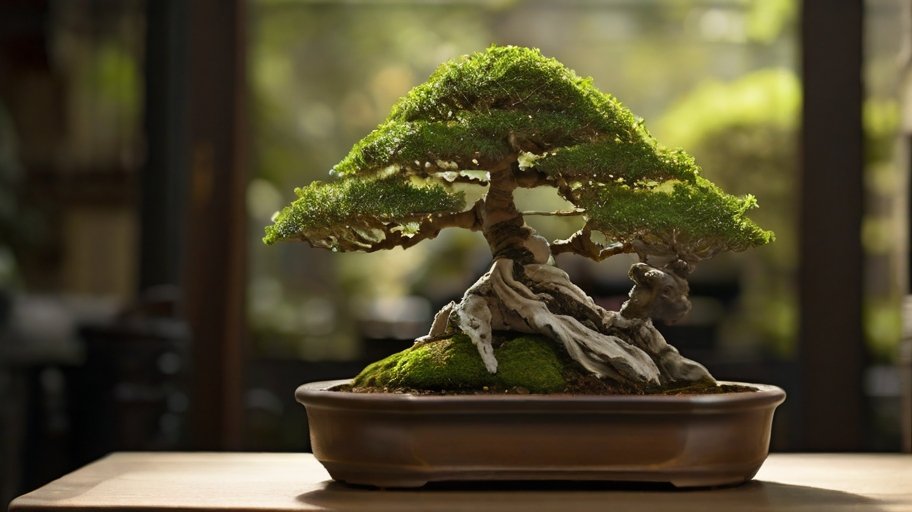
Origin and Description
The Lemon Cypress Bonsai, known by the science folks as Cupressus macrocarpa ‘Goldcrest,’ was born and bred on the Monterey Peninsula in California. It’s a type of Monterey cypress, a species that calls this region home. This bonsai is a beauty, with its soft, evergreen needles and its neat, cone-like shape. It’s like a mini Christmas tree that stays fresh all year round!
The Scent and Color That Sets It Apart
Here’s the fun part – the color and scent that make this bonsai a superstar. The Lemon Cypress Bonsai is dressed in a bright lime-green outfit that doesn’t fade, no matter the season. It’s like a little burst of summer on your windowsill.
But wait till you get a whiff of it! Touch or brush against its leaves, and you’re greeted with a fresh, lemony fragrance. Think of it as a natural air freshener that also looks pretty. This unique smell-good feature makes the Lemon Cypress Bonsai extra special.
So, to sum it up, the Lemon Cypress Bonsai is more than just a pretty plant. It’s a visual treat and a nose-pleaser, all rolled into one. No wonder it’s a hit among plant lovers far and wide!
The Art of Growing a Lemon Cypress Bonsai
Ready to bring the refreshing charm of the Lemon Cypress Bonsai into your life? Let’s get down to the nitty-gritty of growing this citrusy wonder!

Detailed Steps to Start Growing Your Own Lemon Cypress Bonsai
- Get Your Hands on a Seedling or Sapling: You can find Lemon Cypress Bonsai seedlings or saplings at local nurseries or online.
- Choose the Right Pot: A pot with good drainage is crucial. The size will depend on the size of your sapling, but make sure it’s not too cramped.
- Prepare the Soil: The Lemon Cypress Bonsai loves well-draining soil. A mix of loam, sand, and peat moss usually works well.
- Planting: Place your sapling in the pot, spread out its roots gently, and cover with soil. Make sure the tree is firm in its position.
- Watering: After planting, water thoroughly. This bonsai doesn’t like soggy roots but enjoys moist soil.
- Location: Place your bonsai in a spot with plenty of indirect sunlight.
Importance of Well-Draining Soil and Watering Regime
The Lemon Cypress Bonsai dislikes “wet feet.” Therefore, well-draining soil is a must to prevent waterlogging. Overwatering can lead to root rot, an ailment that can be fatal for your bonsai.
As for watering, consistency is key. Keep the soil evenly moist, but not waterlogged. A good rule of thumb is to water when the top inch of soil feels dry to the touch.
Tips and Tricks for Successful Growth
- Pruning: Regular pruning helps maintain the shape of your bonsai and promotes denser foliage.
- Fertilizing: During the growing season, feed your bonsai with a balanced bonsai fertilizer every two weeks.
- Repotting: To prevent your bonsai from becoming root-bound, repot every two to three years.
- Keep an Eye Out for Pests: Watch out for common pests like aphids and scale insects. Regularly check your bonsai’s leaves and act promptly if you spot any trouble.
- Patience is a Virtue: Remember, growing a bonsai is a journey. Enjoy the process and don’t rush it!
Shaping Your Lemon Cypress Bonsai
Shaping a bonsai is where the real artistry comes in. It’s your chance to give your Lemon Cypress Bonsai its unique character and style. Let’s explore some shaping techniques and hear from bonsai enthusiasts about their personal experiences.
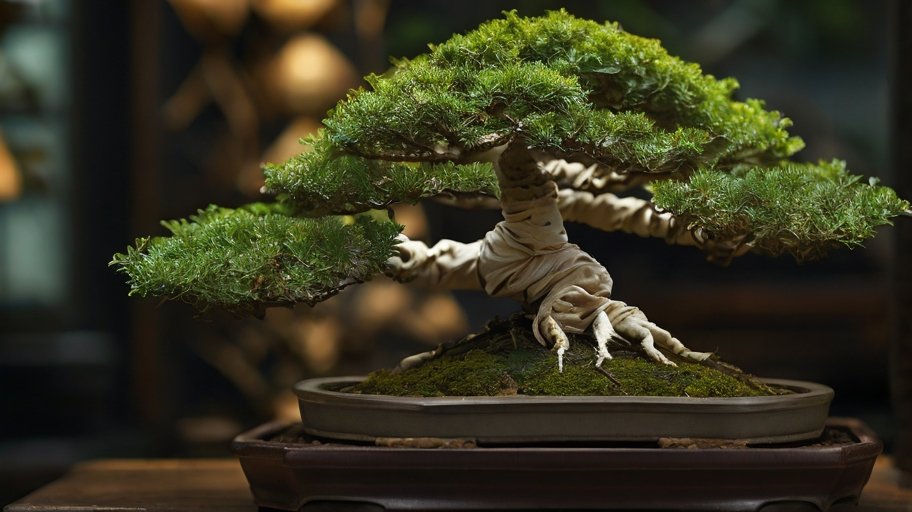
Shaping Techniques and Their Impact on the Bonsai’s Appearance
Pruning: The most common shaping technique, pruning involves removing select branches and leaves to create a desired shape. Regular pruning can lead to denser foliage and a more compact appearance.
Wiring: This technique involves wrapping wire around the branches and trunk and gently bending them into shape. After a few months, the tree should hold this new shape. This technique allows you to create more intricate and stylized shapes.
Clamping: For thicker branches that can’t be shaped with wiring, clamps can be used to apply pressure and encourage the branch to grow in a particular direction.
Defoliation: This technique involves removing some or all of the leaves of the tree. This encourages the growth of smaller, denser foliage and can make the tree look more mature.
Personal Experiences and Ideas from Bonsai Enthusiasts
Many bonsai enthusiasts have shared their experiences and ideas about shaping their Lemon Cypress Bonsais. Here are a few:
Some prefer a natural look, allowing the bonsai to grow freely with minimal shaping, while others enjoy creating dramatic, stylized shapes.
One enthusiast shared how they used wiring to create a windswept look, giving the impression that the tree has weathered strong winds on a cliffside.
Another enthusiast found success with regular pruning to maintain a compact, bushy appearance. They also stressed the importance of rotating the bonsai regularly to ensure even growth.
Several enthusiasts mentioned the importance of patience and gentle care when shaping. It’s better to make small, gradual changes rather than trying to force a drastic change all at once.
Remember, shaping your bonsai is a personal journey. There’s no one “right” way to do it. Experiment with different techniques, learn from other enthusiasts, and most of all, enjoy the process!
Lemon Cypress Bonsai Care Overview
| Aspect | Lemon Cypress Bonsai Care |
|---|---|
| Light | Prefers bright, indirect light. Can tolerate some direct sunlight but avoid harsh afternoon sun. |
| Water | Keep soil evenly moist. Water when the top inch of soil feels dry to touch. Avoid waterlogging. |
| Soil | Well-draining soil is crucial. A mix of loam, sand, and peat moss is recommended. |
| Temperature | Thrives in temperatures between 60°F and 75°F. Not frost-tolerant. |
| Humidity | Prefers moderate to high humidity. Mist regularly or use a humidity tray. |
| Fertilizer | Use a balanced bonsai fertilizer every two weeks during the growing season. |
| Pruning | Regular pruning helps maintain shape and promotes denser foliage. |
| Repotting | Repot every two to three years to prevent the tree from becoming root-bound. |
| Pests/Diseases | Watch out for aphids and scale insects. Overwatering can lead to root rot. |
Troubleshooting Common Issues
Taking care of a Lemon Cypress Bonsai is a rewarding experience, but like any living thing, it can have its share of problems. Here are some common issues and expert advice on maintaining the health of your tree.
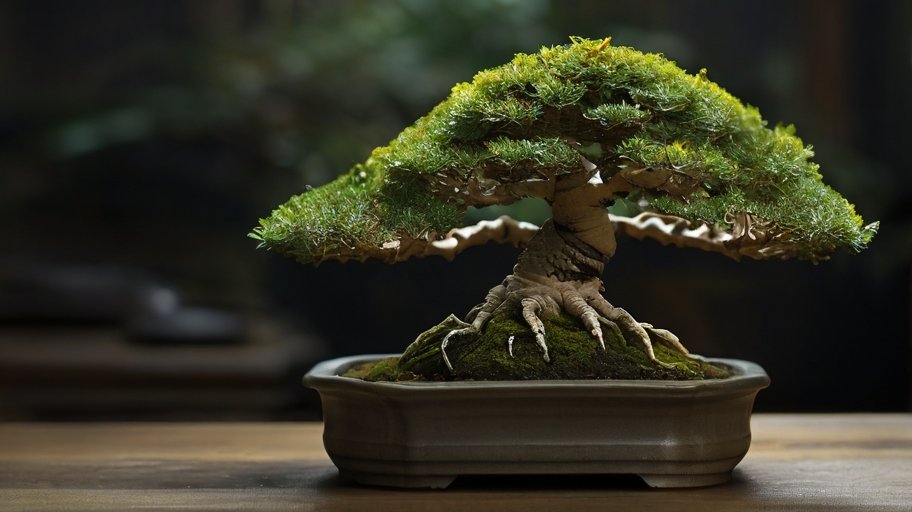
Yellowing Leaves
This could be due to overwatering or underwatering. Check the soil’s moisture levels. If it’s too wet, allow it to dry out before watering again. If it’s dry, increase your watering frequency.
Dropping Leaves
If your bonsai is losing leaves, it might be due to a sudden change in temperature or light conditions. Ensure your bonsai is in a stable environment with consistent light and temperature.
Pests
Common pests include aphids and scale insects. If you notice small bugs or a sticky residue on your bonsai, it may have pests. Treat with a mild insecticidal soap or neem oil.
Weak or Slow Growth
This could be a sign that your bonsai needs more nutrients. During the growing season, feed your bonsai with a balanced bonsai fertilizer every two weeks.
Root Rot
If your bonsai’s leaves are wilting and the roots look black and mushy, it might have root rot caused by overwatering. You’ll need to remove the affected roots and repot the bonsai in fresh, well-draining soil.
Expert Advice on Maintaining the Health of the Tree
- Consistency is Key: The Lemon Cypress Bonsai thrives in a stable environment. Try to keep light, temperature, and watering consistent.
- Patience Pays Off: Don’t rush changes in shaping or care routines. Bonsais respond slowly, and too much change too quickly can cause stress.
- Regular Check-ups: Regularly inspect your bonsai for signs of pests or disease. Early detection makes treatment easier and more successful.
- Less is More: When it comes to watering, pruning, and fertilizing, it’s often better to err on the side of too little rather than too much.
- Learn from the Community: Connect with other bonsai enthusiasts. There’s a wealth of knowledge and experience in the bonsai community, and they’re usually more than happy to help fellow growers!
Enjoying Your Lemon Cypress Bonsai
The joy of nurturing a Lemon Cypress Bonsai goes beyond its aesthetic appeal. The process of caring for and shaping your bonsai is a journey of personal growth and mindfulness. As you care for your bonsai, you’ll develop patience, focus, and a deeper appreciation for the beauty of nature.
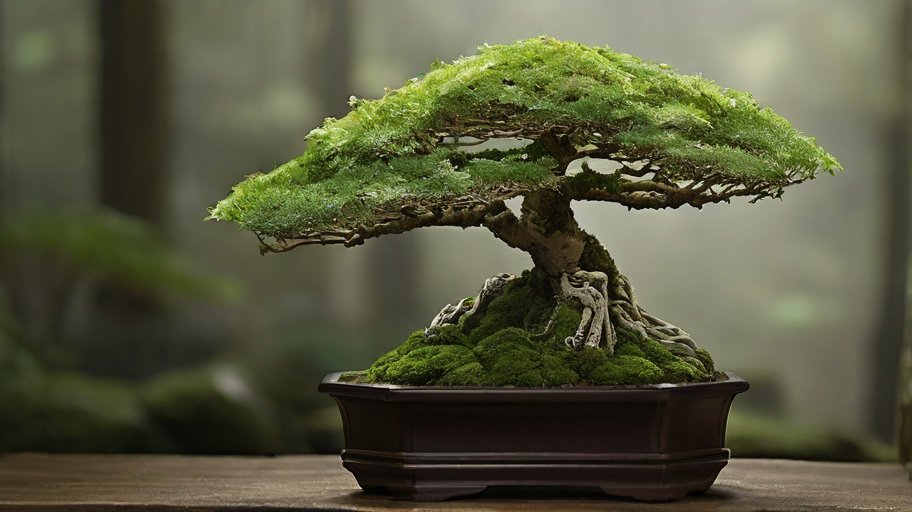
The Joy and Satisfaction Derived from Nurturing a Lemon Cypress Bonsai
The Lemon Cypress Bonsai, with its brilliant yellow-green foliage and unique lemon scent, brings a touch of natural beauty to any space. But more than that, it’s a living piece of art that you can shape and nurture.
Many bonsai enthusiasts find the process of caring for their bonsai to be a form of meditation, providing a calming and focusing effect. Witnessing the slow transformation of your bonsai as it responds to your care can bring a deep sense of satisfaction.
Conclusion
Caring for a Lemon Cypress Bonsai is an enriching journey that combines art, nature, and mindfulness. In this guide, we’ve covered the key aspects of Lemon Cypress Bonsai care including its light, water, soil, temperature, and humidity needs, as well as fertilizing, pruning, and repotting practices. We’ve also addressed common issues you might face while caring for your bonsai and provided expert advice on maintaining its health.
Remember, consistency is key in nurturing your bonsai. Regular check-ups, patience, and learning from the community are invaluable tools in your bonsai journey. Each Lemon Cypress Bonsai has a unique story to tell, and by sharing your experiences, you contribute to the rich tapestry of stories within the Bonsai community.
We hope this guide has equipped you with the knowledge you need to start or continue your Lemon Cypress Bonsai journey. There’s no better time than now to embark on this rewarding adventure. As you nurture your bonsai, may you also grow in patience, focus, and appreciation for the beauty of nature.
Frequently Asked Questions (FAQs)
How often should I water my Lemon Cypress Bonsai?
The Lemon Cypress Bonsai prefers moist but not soggy soil. The watering frequency can depend on various factors like the size of the pot, the type of soil, and the environmental conditions. However, a good rule of thumb is to water your bonsai when the top one inch of the soil feels dry to touch.
What kind of light does a Lemon Cypress Bonsai need?
The Lemon Cypress Bonsai prefers bright, indirect light. While it can tolerate direct sunlight, it’s best to protect it from harsh, midday sun as this can scorch the leaves.
Can I grow my Lemon Cypress Bonsai indoors?
Yes, the Lemon Cypress Bonsai can be grown indoors. Just ensure it’s placed in a bright location and the humidity levels are not too low. It also appreciates a cooler environment, so avoid placing it near heat sources like radiators.
Why are the leaves on my Lemon Cypress Bonsai turning brown?
Brown leaves might be a sign of underwatering, over-fertilization, or a pest infestation. Check the moisture levels of the soil and consider if you have recently changed your fertilization routine. If you notice any pests, treat with a mild insecticidal soap.
Can I prune my Lemon Cypress Bonsai to maintain its size?
Yes, regular pruning not only helps maintain the size of your bonsai but also encourages bushier growth. However, remember to prune sparingly and not remove more than a third of the foliage at once.
What kind of fertilizer should I use for my Lemon Cypress Bonsai?
Use a balanced bonsai fertilizer with equal amounts of Nitrogen, Phosphorus, and Potassium. During the growing season, apply the fertilizer every two weeks.
Further Reading And Resources
- The Exquisite Art of Growing Rainbow Eucalyptus Bonsai: A Comprehensive Guide
- Mastering the Art of Southern Magnolia Bonsai: A Comprehensive Guide
- Mastering the Art of Yoshino Cherry Bonsai: A Comprehensive Guide
- Cultivating a Fiery Beauty: A Comprehensive Guide to Flame Tree Bonsai
- Mastering the Art of Rocky Mountain Pine Bonsai: A Comprehensive Guide
- Cultivating Harmony: A Comprehensive Guide to Ming Aralia Bonsai






obviously like your website but you need to test the spelling on quite a few of your posts Several of them are rife with spelling problems and I to find it very troublesome to inform the reality on the other hand Ill certainly come back again